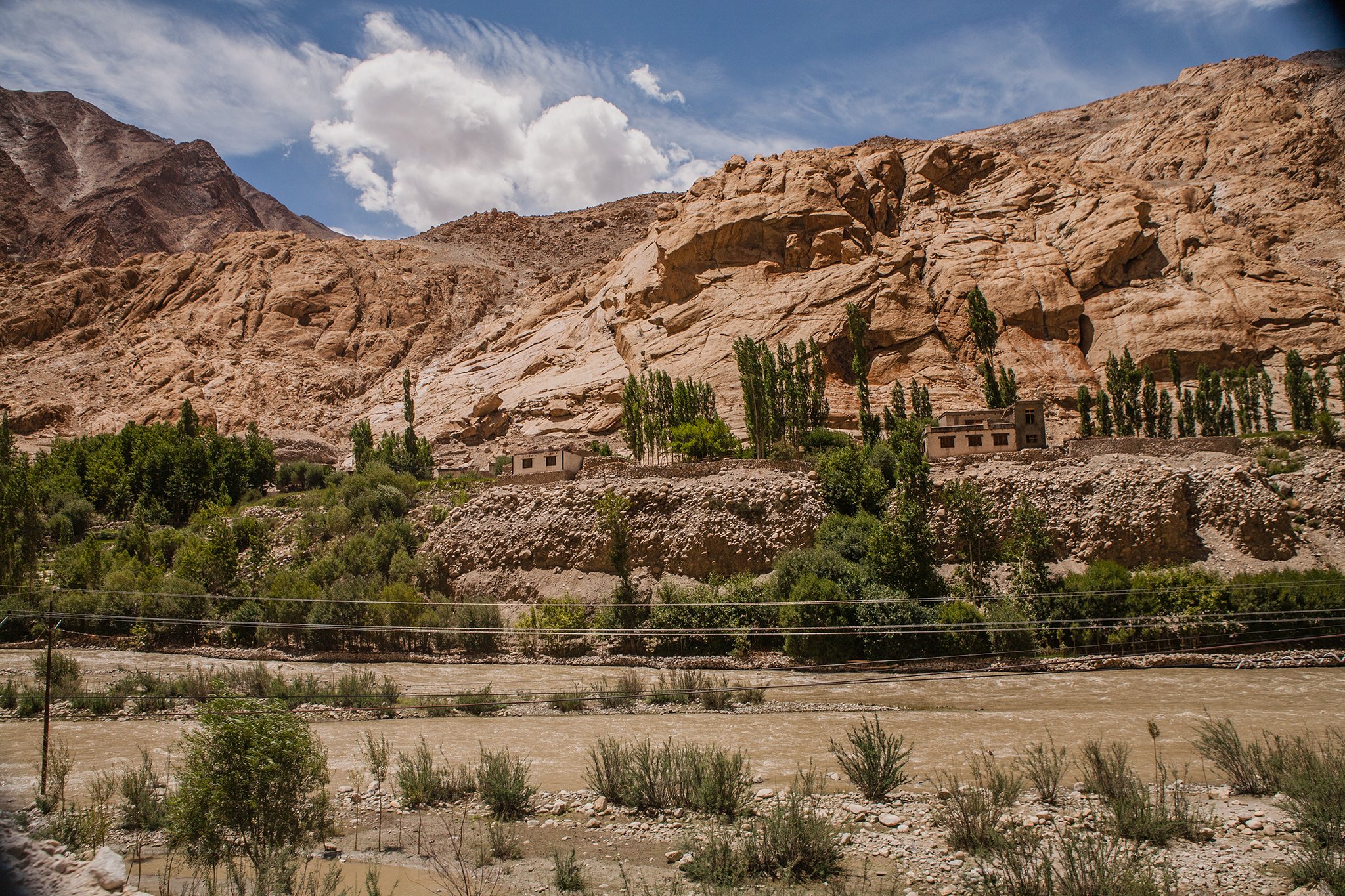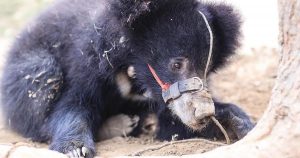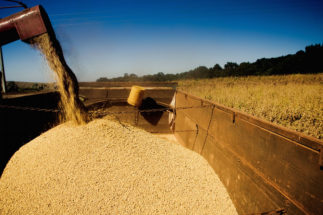The government has ordered cutting and lopping of hundreds of thousands of female poplar trees in Kashmir to “contain” the spread of Covid-19 infections.
They are going by the local belief that poplars – which flower in late April and May – are responsible for allergies and spread respiratory infections.
Botanists say there is no scientific proof of this. Doctors say that by producing oxygen, trees actually improve lung capacity of all animal life in their vicinity.
Poplars (Populus deltoids) of a variety called Russian poplars – though they have no connection to Russia – now line almost every roadside in the Himalayan valley of Kashmir, and are grown in commercial plantations everywhere. In the flowering season, their cotton-covered seeds float in the air and settle everywhere, reportedly getting into respiratory systems as well.
There is not a single study which has proved that seeds of female poplars cause respiratory infections.We can’t blame them without any scientific evidence.Anzar Khuru
In 2014, a resident went to the Jammu and Kashmir High Court seeking a ban on planting of female poplars, and the court ordered the state government to do so. In subsequent years, the court asked the government to also identify and fell female poplar trees across Kashmir. Thousands have been felled since 2014.
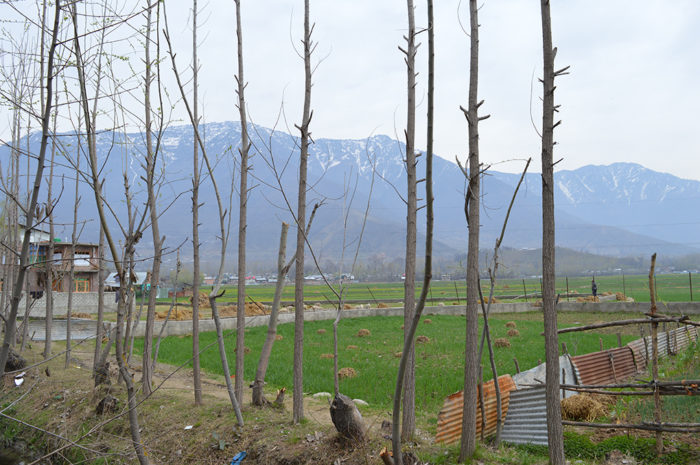
The number of felled trees would have been higher if environmentalists and civil society had not raised a hue and cry. They have been pointing to the lack of scientific proof about the role of female poplar trees in causing respiratory ailments.
But, given the panic the Covid-19 outbreak has caused, the environmentalists may not be able to save the rest of the female poplars this time. In line with all other states and union territories of India, the Jammu and Kashmir government has issued a notification on March 17, declaring the coronavirus infection an epidemic. The notification says any person who refuses to follow the government’s orders on prevention or treatment of the disease will be dealt under the law.
The order to cut down poplars takes strength from this notification. The order reads, “Social Forestry Department, Kashmir shall immediately start the process of felling of 42,000 poplar trees of Russian species at different locations-avenues in the form of strips. The department shall initially start lopping of all such trees and shall furnish action report within a week’s time.” The order has been sent to social forestry officials and deputy commissioners of all districts in Kashmir following a meeting chaired by Kashmir’s Divisional Commissioner, Pandurang Kondbarao Pole, on April 2.
A tweeted order by an additional district magistrate attributes the issue to the pollen (sic) spreading infection.
Poplars could complicate our problems. Public must comply, in their own interests. pic.twitter.com/P5NWgjIQVu
— Syed Yasir (@yasirsyedx) April 3, 2020
“All the deputy commissioners of Kashmir valley shall ensure the lopping of female poplar trees by the private land owners within one week. In case of non-compliance, the Tehsildars in consultation with the SFC (State Forest Corporation) shall cut down the female Russian species poplar trees and the costs/charges on account of the felling shall [be] met out from the auction proceedings of the felled down trees and the remaining amount shall be remitted in the government treasury. The concerned SSP (Senior Superintendent of Police) shall provide the necessary security arrangements,” Pole has been quoting in the document as directing the deputy commissioners.
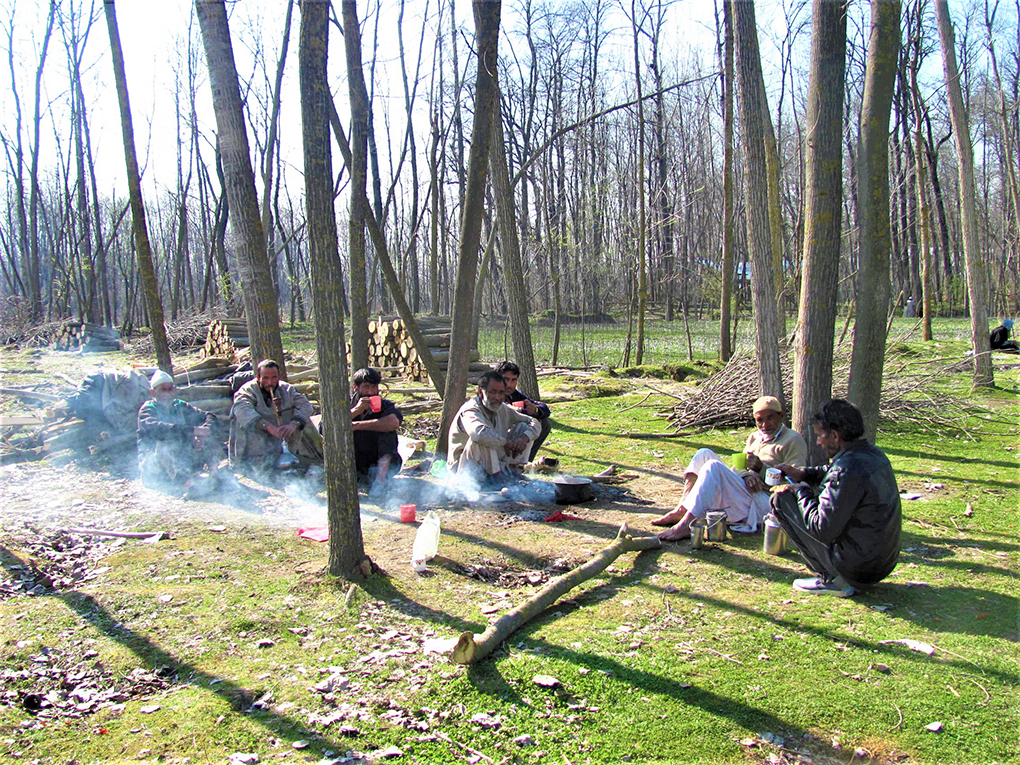
Declared guilty without proof
“There is not a single study which has proved that seeds of female poplars cause respiratory infections. We can’t blame them without any scientific evidence,” Anzar Khuru who teaches Botany at Kashmir University, told thethirdpole.net.
Khuru agreed that people feel inconvenienced by all the cotton flying around in late April and May. “They need to be phased out gradually, but not in a single go. It is not environmentally advisable.”
His colleague Akhtar Malik said that if medical science researchers confirm that flowering poplars can cause respiratory tract infections, the government should prune and lop trees, but not otherwise.
“The huge loss of felling tens of thousands of trees in a matter of weeks cannot be compensated by new plantation of native species such as willow, Himalayan poplar, deodar, elm,” Malik said. “They will take time to render the environmental services being presently rendered by the grown poplars. So, this loss will be felt for years.”
Arjimand Hussain Talib, who has written extensively on Kashmir’s economy, said, “Cutting down millions of poplar trees is not only an environmental disaster, but a huge economic catastrophe.” According to him, farmers will be in distress when they are forced to fell and sell their poplar trees in bulk.
According to official estimates, there are 18 to 20 million female poplar trees in various districts of Kashmir. Most are owned by farmers. “The Divisional Commissioner was apprised that the population of Russian female poplar trees in Kashmir division is 1.80 to 2.00 crores (18 to 20 million) and there are various nurseries of this species in the districts of Pulwama, Kulgam and Anantnag,” says an official document.
Mairaj-u-Din Malik, Joint Director of Kashmir’s Social Forestry Department, said, “While the government has adopted the policy of not raising, planting or selling any Russian female poplar tree saplings since 2014 for the reason that they become a public nuisance in spring, there are over 900 private nurseries where the Russian Poplar (female) saplings are raised and sold to farmers across Kashmir for the past over two decades. The nursery owners “simply do it for business,” he added.
This is why these female poplars have spread across the length and breadth of Kashmir, Malik said, adding that his department had only 68,000 female poplars in 2014 out of which 26,000 have been felled. The other 42,000 will be lopped and felled in the coming weeks.
Popular poplar trees
An integral part of Kashmir’s landscape, the poplar has effectively been insurance for the valley’s farmers. It is customary to sell the fast-growing trees for timber whenever a farmer is in particular need of cash – to build a new house, for a wedding, a health crisis or a pilgrimage.
The timber is used to build the crates in which Kashmir sends its famed fruits all over India – apples, pears, peaches and others. The timber is also used for rafters. Being a ready source of timber, poplars have also reduced pressure on natural forests.
Mohammad Yousuf Zargar, director of research at the Sher-e-Kashmir University of Agricultural Science and Technology, says that the Russian poplar saves about 300,000 cubic feet of conifer timber annually in Kashmir. In 2013, he and his colleagues submitted a report to this effect to the erstwhile state legislative assembly.
After the government’s order, many farmers have begun felling the trees in panic before the price crashes or something else happens. “Thankfully, most of my poplars are quite grown up. So, I decided to cut them down. If I don’t, my crop might be confiscated by the government,” said Abdul Jabbar, a resident of Lolab-Kupwara.
The problem with poplars is that the harmless but slow-growing native variety has been almost completely replaced by the Russian variant, introduced during a World Bank-aided project in 1982. Native poplars take 40-50 years to mature, while the Russian variety takes around 15, which makes it the preference for commercial plantations.
